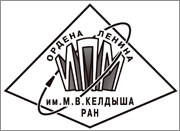|
This article is cited in 2 scientific papers (total in 2 papers)
A study of the barotropic quasi-hydrodynamic model for the two-phase mixture involving surface effects
V. A. Balashova, A. A. Zlotnikb, E. B. Savenkova
a Keldysh Institute of Applied Mathematics of Russian Academy of Sciences, Moscow
b National Research University "Higher School of Economics" (HSE), Moscow
Abstract:
A study of the barotropic quasi-hydrodynamic system of equations for the two-phase two-component
mixture involving the surface tension and stationary potential force is accomplished.
Under fairly general assumptions on the Helmholtz free energy of the mixture, the energy
balance equation with non-positive energy production together with its corollary, the law of nonincreasing
total energy, are derived; in particular, both the isothermal and isentropic cases are
covered. Under additional assumptions, the necessary and sufficient conditions for the linearized
stability of constant solutions are derived (it does not take place always).
A finite-difference approximation of the problem is constructed in the 2D periodic case for
a non-uniform rectangular mesh. Approximation of the capillary stress tensor is improved in
the momentum balance equation thus increasing the quality of numerical solutions.
The results of numerical experiments are presented. They demonstrate the ability of the
model to ensure the qualitatively correct description for the dynamics of surface effects as well
as applicability of the linearized stability criterion in the original nonlinear statement.
Keywords:
quasi-hydrodynamic system of equations, multiphase flows, diffuse interface, the energy balance equation, linearized stability, finite-difference scheme, numerical experiments.
Citation:
V. A. Balashov, A. A. Zlotnik, E. B. Savenkov, “A study of the barotropic quasi-hydrodynamic model for the two-phase mixture involving surface effects”, Keldysh Institute preprints, 2016, 089, 25 pp.
Linking options:
https://www.mathnet.ru/eng/ipmp2163 https://www.mathnet.ru/eng/ipmp/y2016/p89
|

| Statistics & downloads: |
| Abstract page: | 247 | | Full-text PDF : | 62 | | References: | 48 |
|




 Contact us:
Contact us: Terms of Use
Terms of Use
 Registration to the website
Registration to the website Logotypes
Logotypes








 Citation in format
Citation in format 
